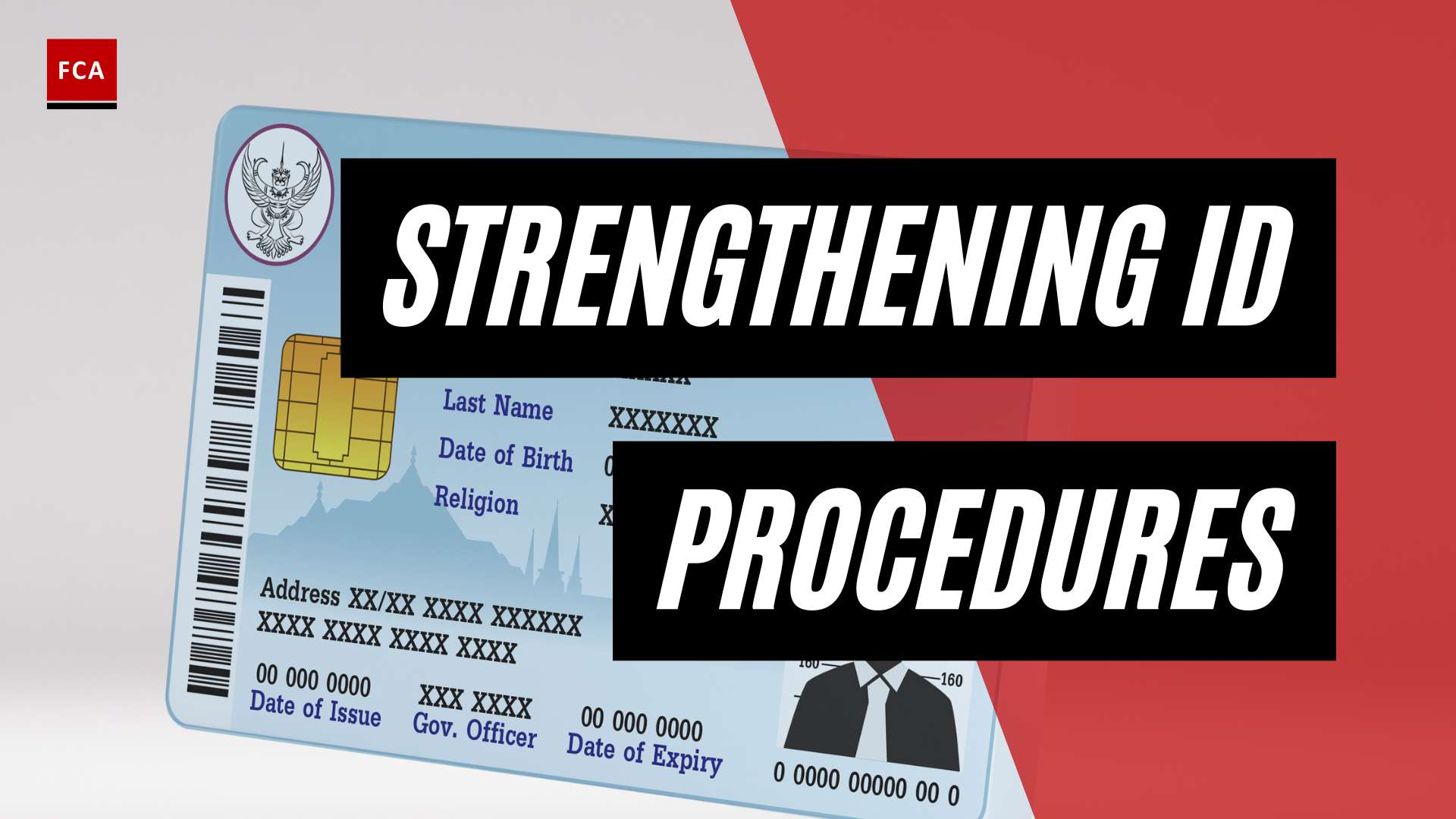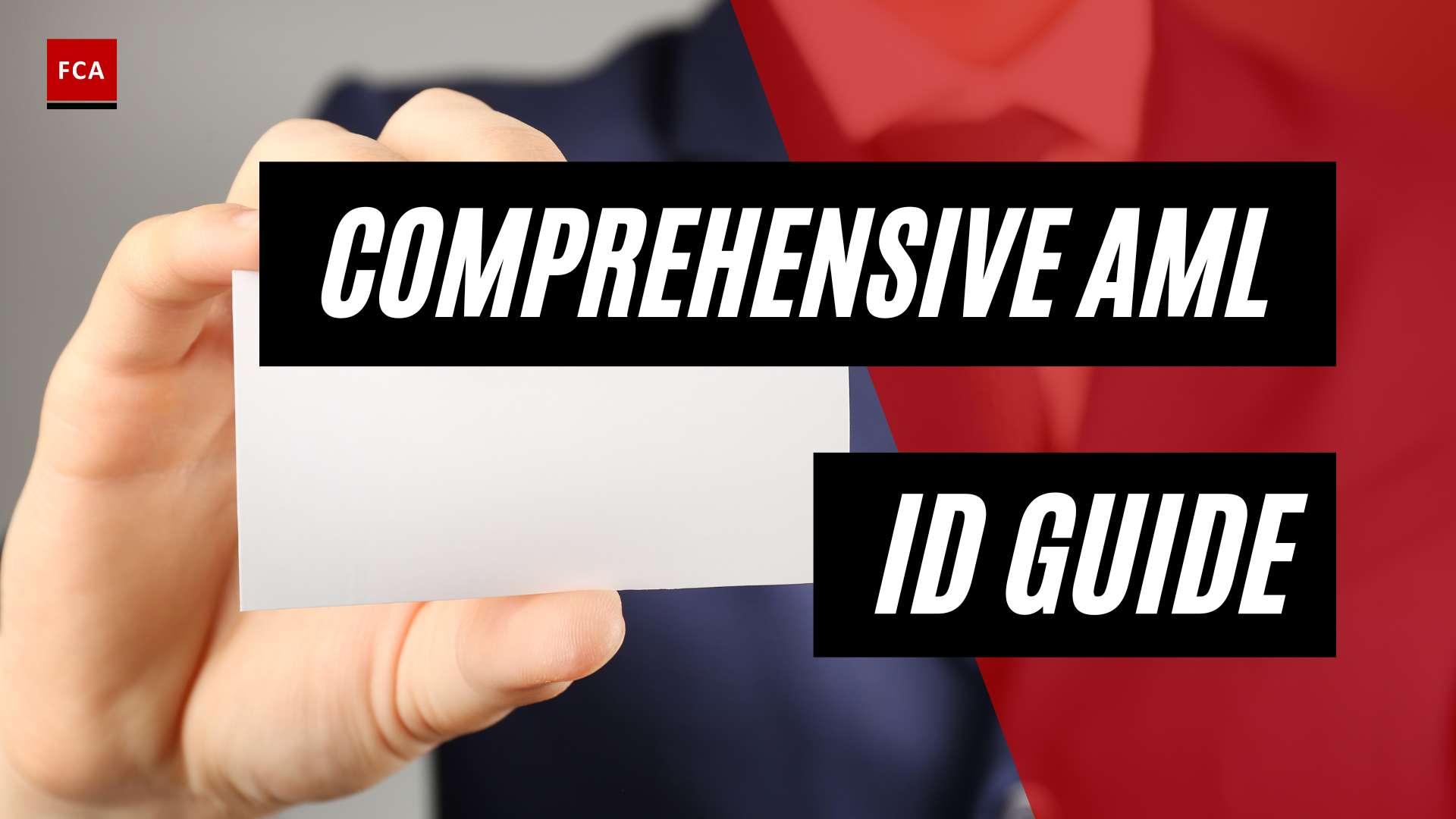Understanding Customer Due Diligence (CDD)
In the realm of anti-money laundering (AML) compliance, customer due diligence (CDD) plays a critical role in identifying and mitigating the risks associated with money laundering and other illicit activities. Effective CDD training is essential for professionals working in compliance, risk management, anti-money laundering, and anti-financial crime roles.
The Importance of CDD Training
CDD training is crucial for financial institutions to detect and prevent money laundering activities, as well as to comply with regulations. By providing comprehensive training, organizations ensure that their employees are equipped with the necessary knowledge and skills to effectively carry out CDD processes and procedures. This includes learning about customer due diligence definition and processes, identifying red flags indicating suspicious activities, and understanding the importance of conducting thorough investigations (Alessa).
By investing in CDD training, businesses can demonstrate their commitment to combating financial crime and protecting their operations and reputation. Swift emphasizes the importance of financial crime compliance, stating that it has never been more important or challenging, as regulations continue to evolve and become more robust.
Regulatory Requirements for CDD
Regulatory bodies worldwide have established requirements for CDD to ensure that financial institutions and other regulated entities implement robust measures against money laundering and terrorist financing. These requirements may vary across jurisdictions, but they generally require organizations to:
- Identify and verify the identity of their customers
- Understand the nature of the customer’s business or activities
- Assess and monitor customer risk profiles
Compliance with CDD regulations is crucial to avoid significant penalties and reputational damage. Companies can face fines of up to $14 million for breaches of AML/CTF regulations, making it crucial for employees to receive comprehensive and effective CDD training to mitigate the risk of costly penalties (Financial Crime Academy).
To ensure compliance with regulatory requirements, organizations must establish robust CDD procedures, policies, and documentation. This includes retaining customer information and documenting risk assessments (CDD documentation). Implementing CDD training programs is a proactive step organizations can take to ensure their employees understand and adhere to these requirements.
By providing comprehensive CDD training, businesses can reduce the risk of regulatory fines and sanctions, protect their reputation and financial integrity, and demonstrate their commitment to combating financial crime. In the following sections, we will explore the benefits of effective CDD training and the key components of CDD training programs.
Benefits of Effective CDD Training
When it comes to CDD training, investing in comprehensive and effective programs yields numerous benefits for organizations. These benefits include reducing regulatory fines and sanctions, as well as protecting reputation and financial integrity.
Reducing Regulatory Fines and Sanctions
One of the primary advantages of effective CDD training is the reduction of regulatory fines and sanctions. Non-compliance with anti-money laundering (AML) and counter-terrorism financing (CTF) regulations can result in severe penalties for companies. In fact, fines for breaches of AML/CTF regulations can reach up to $14 million Financial Crime Academy. By providing employees with comprehensive training on CDD requirements and procedures, organizations can ensure higher compliance with AML/CTF regulations, thereby minimizing the risk of costly penalties.
Protecting Reputation and Financial Integrity
Inadequate CDD training can expose companies to reputational damage, financial losses, and even criminal charges. It is essential for organizations to prioritize robust and ongoing training programs for employees in order to protect their reputation and financial integrity Financial Crime Academy. Well-trained employees contribute to the overall effectiveness of an institution’s compliance program, helping safeguard its reputation and integrity.
By investing in comprehensive CDD training programs, organizations benefit from improved risk management practices and enhanced due diligence processes. Employees who are well-versed in CDD principles and procedures contribute to the overall effectiveness of a company’s compliance program, enabling it to better protect against financial crime threats Financial Crime Academy.
The benefits of effective CDD training extend beyond mere regulatory compliance. Organizations that prioritize comprehensive training programs also demonstrate their commitment to ethical business practices and the fight against financial crime. By equipping employees with the necessary knowledge and skills, organizations can enhance their overall risk management framework and contribute to a safer and more secure financial environment.
In conclusion, effective CDD training programs play a crucial role in reducing regulatory fines and sanctions while safeguarding an organization’s reputation and financial integrity. By investing in ongoing training initiatives, companies can ensure that their employees are equipped with the necessary skills and knowledge to meet the evolving challenges of AML/CTF compliance.
Components of CDD Training
To effectively implement Customer Due Diligence (CDD) procedures, comprehensive training programs are essential. These programs equip professionals working in compliance, risk management, anti-money laundering (AML), and anti-financial crime with the knowledge and skills required to perform their roles efficiently. The key components of CDD training include customer identification and verification, risk assessment and customer profiling, and enhanced due diligence (EDD) measures.
Customer Identification and Verification
Customer identification and verification are crucial steps in the CDD process. Training programs focus on teaching employees how to accurately identify customers and verify their identities using reliable and approved methods. This includes understanding the different types of identification documents and their validity, as well as recognizing potential red flags or suspicious activities during the identification process. By ensuring thorough customer identification and verification, organizations can mitigate the risk of engaging in transactions with individuals involved in illicit activities.
Risk Assessment and Customer Profiling
Risk assessment and customer profiling play a vital role in CDD. Training programs provide professionals with the necessary knowledge and tools to assess the risk associated with each customer. This involves understanding factors such as the customer’s industry, geographic location, transaction history, and any potential connections to high-risk individuals or entities. By conducting a comprehensive risk assessment and customer profiling, organizations can identify higher-risk customers and implement appropriate risk mitigation measures.
Enhanced Due Diligence (EDD) Measures
Under a risk-based approach to compliance, high-risk customers, such as politically exposed persons (PEPs) and those subject to economic sanctions, require enhanced due diligence (EDD) measures. EDD involves a more intensive level of scrutiny during the CDD process to gain a deeper understanding of the customer’s AML/CFT risk. Training programs provide professionals with the skills to conduct EDD effectively, which may include gathering additional information, performing more extensive background checks, and monitoring transactions more closely. By implementing EDD measures, organizations can mitigate the higher risks associated with certain customers and ensure compliance with regulatory requirements.
By focusing on customer identification and verification, risk assessment and customer profiling, and enhanced due diligence measures, CDD training programs enhance professionals’ abilities to recognize red flags and effectively mitigate risks associated with potentially illicit activities. These training programs contribute to building a strong compliance culture within organizations and aid in preventing financial crimes such as money laundering and terrorist financing. To learn more about CDD and related topics, you can explore our articles on cdd requirements, customer due diligence definition, and cdd documentation.
Implementing CDD Training Programs
To ensure effective implementation of Customer Due Diligence (CDD) processes, organizations need to invest in comprehensive CDD training programs. These programs play a crucial role in building a culture of compliance, equipping employees with the necessary tools and knowledge to effectively carry out their CDD responsibilities.
Building a Culture of Compliance
Building a culture of compliance starts with establishing a strong foundation of knowledge and understanding among employees. CDD training programs provide employees with a clear understanding of the importance of CDD in mitigating financial crime risks. Such training emphasizes the significance of adhering to regulatory requirements and helps employees recognize their role in preventing money laundering and other illicit activities.
By fostering a culture of compliance, organizations create an environment where employees are aware of the potential risks and actively contribute to the institution’s overall risk management efforts. Training programs should emphasize the importance of vigilance, ethical behavior, and the need to promptly report any suspicious activities. Through these programs, employees gain the confidence to carry out their CDD responsibilities effectively.
Tools and Technologies for Effective CDD
In today’s digital age, leveraging tools and technologies can significantly enhance the efficiency and effectiveness of CDD processes. CDD training programs should introduce employees to various software applications and systems designed to streamline the identification, verification, and monitoring of customers.
These tools can automate processes, improve data accuracy, and provide real-time alerts for potential risks or red flags. Training programs should familiarize employees with the features and functionality of these tools, ensuring they can navigate and utilize them effectively.
Additionally, training programs should cover the use of artificial intelligence (AI) and machine learning (ML) technologies in CDD processes. These technologies can help identify patterns, detect anomalies, and enhance risk assessment capabilities. By incorporating training on tools and technologies, organizations can empower employees to leverage these advancements in their day-to-day CDD activities.
Continuous Education and Training
CDD requirements and best practices continue to evolve as regulators adapt to emerging financial crime risks. Continuous education and training on CDD guidelines and regulations are essential to keep employees up-to-date with the latest industry standards.
Organizations should establish a framework for ongoing training and knowledge enhancement, ensuring that employees receive regular updates on regulatory changes, emerging typologies, and evolving risk factors. This can be achieved through refresher courses, workshops, webinars, and access to relevant resources.
By investing in continuous education and training, organizations demonstrate their commitment to maintaining a robust and effective CDD program. Well-trained employees contribute to the overall effectiveness of an institution’s compliance program, safeguarding its reputation and integrity.
By implementing comprehensive CDD training programs that focus on building a culture of compliance, utilizing tools and technologies effectively, and providing continuous education, organizations can strengthen their AML compliance efforts and better protect themselves against financial crime risks.
The Role of CDD in AML Compliance
Customer Due Diligence (CDD) plays a crucial role in Anti-Money Laundering (AML) compliance efforts, serving as the foundation for Know Your Customer (KYC) processes. Effective CDD training is essential for financial institutions and other regulated entities to combat money laundering and terrorism financing. By understanding the importance of CDD in AML compliance and complying with Financial Action Task Force (FATF) recommendations, organizations can better protect themselves and the broader financial system.
CDD as a Foundation of KYC Processes
CDD forms the basis of the KYC process, which requires companies to understand their customers, their financial behavior, and the risks they pose in terms of money laundering or terrorism financing. This requirement is outlined in Recommendation 10 of the FATF’s 40 Recommendations, which all FATF member states must incorporate into their domestic AML/CFT legislation (ComplyAdvantage). KYC processes help organizations establish the identity of their customers, assess the risks associated with their activities, and ensure compliance with regulatory requirements.
The goal of CDD in KYC processes is to collect identifying information to verify a customer’s identity and assess the level of criminal risk they present. This involves gathering information such as the customer’s name, address, details about their business, and the intended use of their account. Verification is typically done through official documents, such as driving licenses, passports, utility bills, and more (ComplyAdvantage).
By conducting thorough CDD procedures, organizations can have a better understanding of their customers, detect potential red flags, and mitigate the risk of financial crime. This helps protect the organization’s reputation, ensure compliance with regulatory requirements, and contribute to the overall integrity of the financial system.
Compliance with Financial Action Task Force (FATF) Recommendations
The FATF, an intergovernmental organization focused on combating money laundering and terrorism financing, has identified CDD as a critical component of AML/CTF efforts. The FATF emphasizes the importance of effective CDD training for financial institutions to combat financial crime (Financial Crime Academy).
To ensure compliance with FATF recommendations, organizations must establish robust CDD policies, procedures, and documentation. They should implement risk-based approaches to assess and manage the potential money laundering and terrorism financing risks associated with their customers. This includes conducting ongoing monitoring of customer activity, updating customer information, and conducting periodic reviews to ensure the continued effectiveness of CDD measures.
By aligning with FATF recommendations and continuously refining CDD practices, organizations can stay ahead of evolving risks, enhance their AML compliance programs, and contribute to the global fight against financial crime.
CDD training programs play a vital role in educating employees and equipping them with the necessary knowledge and skills to carry out effective customer due diligence. By investing in comprehensive training, organizations can enhance their ability to identify and mitigate risks, protect themselves from financial penalties, and maintain a strong culture of compliance.
Recordkeeping and Documentation in CDD
When it comes to Customer Due Diligence (CDD), recordkeeping and documentation play a crucial role in ensuring compliance with regulatory requirements and maintaining an effective AML (Anti-Money Laundering) program. In this section, we will explore two key aspects of recordkeeping and documentation in CDD: retention of customer information and documenting risk assessments.
Retention of Customer Information
Companies are typically required to maintain records of the customer information collected during CDD for at least five years. These records should include identification documents such as driving licenses, passports, birth certificates, as well as any business-related documentation relevant to the customer relationship. By retaining this information, financial institutions and other covered entities can demonstrate their commitment to compliance and provide evidence of their due diligence efforts (ComplyAdvantage).
The retention of customer information serves multiple purposes. First and foremost, it enables companies to fulfill their regulatory obligations and respond to any inquiries or investigations from relevant authorities. Additionally, it allows for the ongoing monitoring of customer behavior and identification of potential red flags or suspicious activities. By having access to historical customer information, institutions can better assess risks, detect patterns, and identify any changes in customer behavior that may warrant further scrutiny.
Documenting Risk Assessments
Documenting risk assessments is an essential component of the CDD process. Covered financial institutions are required to establish and maintain written procedures that are reasonably designed to identify and verify the beneficial owners of legal entity customers at the time a new account is opened, subject to certain exemptions and exceptions (Federal Register). These procedures should outline the steps taken to assess the risk associated with each customer relationship.
To effectively document risk assessments, financial institutions must understand the nature and purpose of the customer relationships. This involves gathering relevant information about the customer’s background, business activities, and transaction patterns. By conducting thorough risk assessments, institutions can develop customer risk profiles, which aid in identifying and mitigating potential money laundering or terrorist financing risks (Federal Register).
Documenting risk assessments helps institutions ensure consistency in their CDD processes and provides a basis for ongoing monitoring and periodic review of customer relationships. It allows for the identification of any changes in the customer’s risk profile over time, enabling institutions to promptly respond to any emerging risks or suspicious activities. Additionally, well-documented risk assessments facilitate internal and external audits, regulatory examinations, and the overall management of AML compliance programs.
By emphasizing the retention of customer information and documenting risk assessments, organizations can demonstrate their commitment to CDD requirements and maintain effective AML compliance programs. It is essential for financial institutions and other covered entities to familiarize themselves with the specific regulatory obligations related to recordkeeping and documentation in CDD to ensure full compliance with the CDD rule issued by FinCEN (Federal Register).
Specialized CDD Training Programs
To enhance expertise in Customer Due Diligence (CDD), specialized training programs are available to equip professionals with the necessary knowledge and skills. These programs cater to different levels of proficiency and specific roles within the compliance and anti-money laundering fields.
ICA Certificates for Foundational Knowledge
ICA (International Compliance Association) offers certificates that provide foundational knowledge essential for roles such as New Entrant/Operations, enabling individuals to grasp the core areas of business (International Compliance Association). These certificates establish a solid understanding of the principles and regulations related to CDD. By completing this training, professionals gain a comprehensive overview of CDD requirements, ensuring they can contribute effectively to compliance efforts.
ICA Advanced Certificates for Analytical Skills
For individuals seeking to develop analytical skills and apply their knowledge in CDD and KYC (Know Your Customer) practices, ICA offers Advanced Certificates. These certificates are designed for roles like Analyst and Manager in the field of CDD and KYC (International Compliance Association). The training focuses on practical application, enabling professionals to analyze complex situations and make informed decisions. By completing the Advanced Certificates, individuals enhance their ability to identify and mitigate risks associated with customer due diligence.
ICA Practitioner Series for Role-Specific Training
The ICA Practitioner Series provides specialized certifications tailored to specific roles within CDD and KYC practices. These certifications equip professionals with specialized knowledge and practical skills necessary to fulfill their specific job requirements (International Compliance Association). The training programs in this series aim to bridge the gap between theoretical knowledge and practical application, enabling professionals to excel in their respective roles. By completing the Practitioner Series, individuals acquire the expertise needed to navigate the complexities of CDD and KYC effectively.
It is essential for professionals working in compliance, risk management, anti-money laundering, and anti-financial crime to undergo specialized CDD training programs. These programs provide the necessary knowledge and skills to ensure compliance with local regulations, international standards, and best practices. By investing in training and staying updated with advancements in CDD, professionals can contribute to robust compliance frameworks and mitigate risks effectively.
For more information on the CDD process and its requirements, you can refer to our articles on cdd requirements and customer due diligence definition. Additionally, our article on cdd documentation provides insights into the necessary recordkeeping and documentation practices in CDD.
The Customer Due Diligence (CDD) Process
To ensure compliance with regulatory requirements and identify potential risks, the Customer Due Diligence (CDD) process plays a vital role in the fight against money laundering and terrorist financing. It involves establishing the identity and activities of customers, as well as assessing their risk profiles. Let’s explore the two key components of the CDD process: establishing customer identity and activities, and conducting risk assessments.
Establishing Customer Identity and Activities
When initiating a business relationship, it is crucial to establish the identity of customers and gain a clear understanding of their activities. This process involves collecting information such as the customer’s name, address, and details about their business. Official documents, including passports, driving licenses, and utility bills, are commonly used for verification purposes.
By verifying customer identities, organizations can identify potential risks and ensure that they are not unknowingly engaging with individuals involved in illicit activities. Establishing customer identity is the first step in the CDD process and serves as a foundation for subsequent risk assessments.
Risk Assessment and Customer Risk Profiles
After establishing customer identity and activities, the next step in the CDD process is conducting a risk assessment. This assessment helps determine the level of risk a customer may pose in terms of money laundering or terrorist financing. A risk-based approach is typically adopted, where customers are categorized based on their risk levels (ComplyAdvantage).
Risk assessments involve evaluating various factors such as the source of funds, the nature of the customer’s business, and any potential red flags associated with the customer’s profile. By analyzing these factors, organizations can create customer risk profiles that enable them to identify high-risk customers and allocate appropriate resources for enhanced due diligence (EDD) measures (ComplyAdvantage).
Effective risk assessments enable organizations to tailor their due diligence efforts based on the level of risk presented by each customer. This approach ensures that resources are allocated efficiently, focusing on customers who require additional scrutiny due to their risk profiles.
By following a comprehensive and systematic CDD process, organizations can better understand their customers, assess potential risks, and fulfill their regulatory obligations. The CDD process serves as the foundation of the Know Your Customer (KYC) processes and is essential for maintaining compliance with financial regulations, including those set forth by the Financial Action Task Force (FATF).
The Customer Due Diligence (CDD) Rule
The Customer Due Diligence (CDD) Rule, issued by the Financial Crimes Enforcement Network (FinCEN) of the United States Department of the Treasury, is an essential component of anti-money laundering (AML) compliance programs. It sets forth explicit requirements for covered financial institutions to identify and verify the beneficial owners of legal entity customers, subject to certain exemptions (Federal Register). Let’s delve into the requirements and integration of the CDD rule with AML compliance programs.
Requirements and Exemptions
The CDD Rule mandates covered financial institutions to establish and maintain written procedures to identify and verify the beneficial owners of legal entity customers when opening new accounts, with exemptions and exceptions provided (Federal Register). These procedures should be reasonably designed to ensure the accuracy and integrity of customer information.
To comply with the CDD Rule, financial institutions must complete the following steps:
-
Customer Identification: Financial institutions must identify and verify the individuals who own or control legal entity customers. This includes obtaining information such as name, date of birth, address, and social security number or passport number.
-
Beneficial Ownership: Financial institutions must identify and verify the natural persons who own or control 25% or more of a legal entity customer, as well as any person who has significant responsibility to control, manage, or direct the legal entity customer. This information must be collected and maintained as part of the CDD process.
While the CDD Rule establishes these requirements, it also provides exemptions for certain types of legal entities. Financial institutions should refer to the specific regulations and consult legal counsel to determine the applicability of exemptions to their operations.
Integration with AML Compliance Programs
The CDD Rule requires covered financial institutions to include customer due diligence procedures as part of their broader AML compliance programs. These procedures should be tailored to the institution’s risk profile and be consistent with the institution’s overall risk-based approach to AML compliance.
Financial institutions must understand the nature and purpose of customer relationships to develop customer risk profiles. This involves assessing the level of risk associated with each customer, such as the types of products or services used, geographic location, and transaction patterns. The risk profiles help financial institutions determine the appropriate level of due diligence necessary for each customer.
The integration of CDD procedures with AML compliance programs is crucial for effectively mitigating the risks of money laundering and terrorist financing. By conducting thorough due diligence on customers and understanding their risk profiles, financial institutions can identify and monitor potentially suspicious activities, enhance their overall compliance efforts, and contribute to the integrity of the financial system.
To ensure compliance with the CDD Rule and effective integration with AML compliance programs, financial institutions should refer to the full text of the requirements as issued by FinCEN on May 11, 2016. The provided link to the Federal Register contains detailed information and compliance obligations for covered financial institutions.
Specialized CDD Training Programs
To effectively combat money laundering and ensure compliance with Anti-Money Laundering (AML) regulations, financial institutions need to provide comprehensive training on Customer Due Diligence (CDD) to their employees. Specialized CDD training programs are designed to equip individuals working in compliance, risk management, anti-money laundering, and anti-financial crime with the necessary knowledge and skills to carry out their responsibilities effectively.
ICA Certificates for Foundational Knowledge
One option for CDD training is to pursue certificates offered by the International Compliance Association (ICA). These certificates provide individuals with a solid foundation in CDD principles and practices. They cover topics such as risk assessment, customer profiling, transaction monitoring, and regulatory requirements. By completing these certificates, professionals gain an in-depth understanding of the CDD process and learn how to identify and mitigate risks associated with potentially illicit activities.
ICA Advanced Certificates for Analytical Skills
For individuals looking to enhance their analytical skills in the context of CDD, the ICA offers advanced certificates. These programs focus on developing a deeper understanding of risk assessment methodologies, data analysis techniques, and advanced investigative skills. By acquiring these analytical skills, professionals can effectively identify red flags and conduct thorough investigations to combat money laundering and other financial crimes.
ICA Practitioner Series for Role-Specific Training
The ICA Practitioner Series is designed to provide role-specific training to professionals working in different areas of compliance and risk management. This series offers specialized training programs tailored to meet the unique needs of specific roles within an organization. For example, there are practitioner programs available for CDD analysts, compliance officers, and risk managers. These programs delve into the intricacies of CDD processes and equip professionals with practical skills to carry out their roles effectively.
By participating in specialized CDD training programs like those offered by the ICA, professionals can enhance their knowledge and skills in customer due diligence. These programs ensure that individuals are equipped to meet regulatory requirements, identify potential risks, and effectively mitigate money laundering and other financial crime threats. Such training programs are essential in building a culture of compliance and maintaining the integrity of financial institutions.








